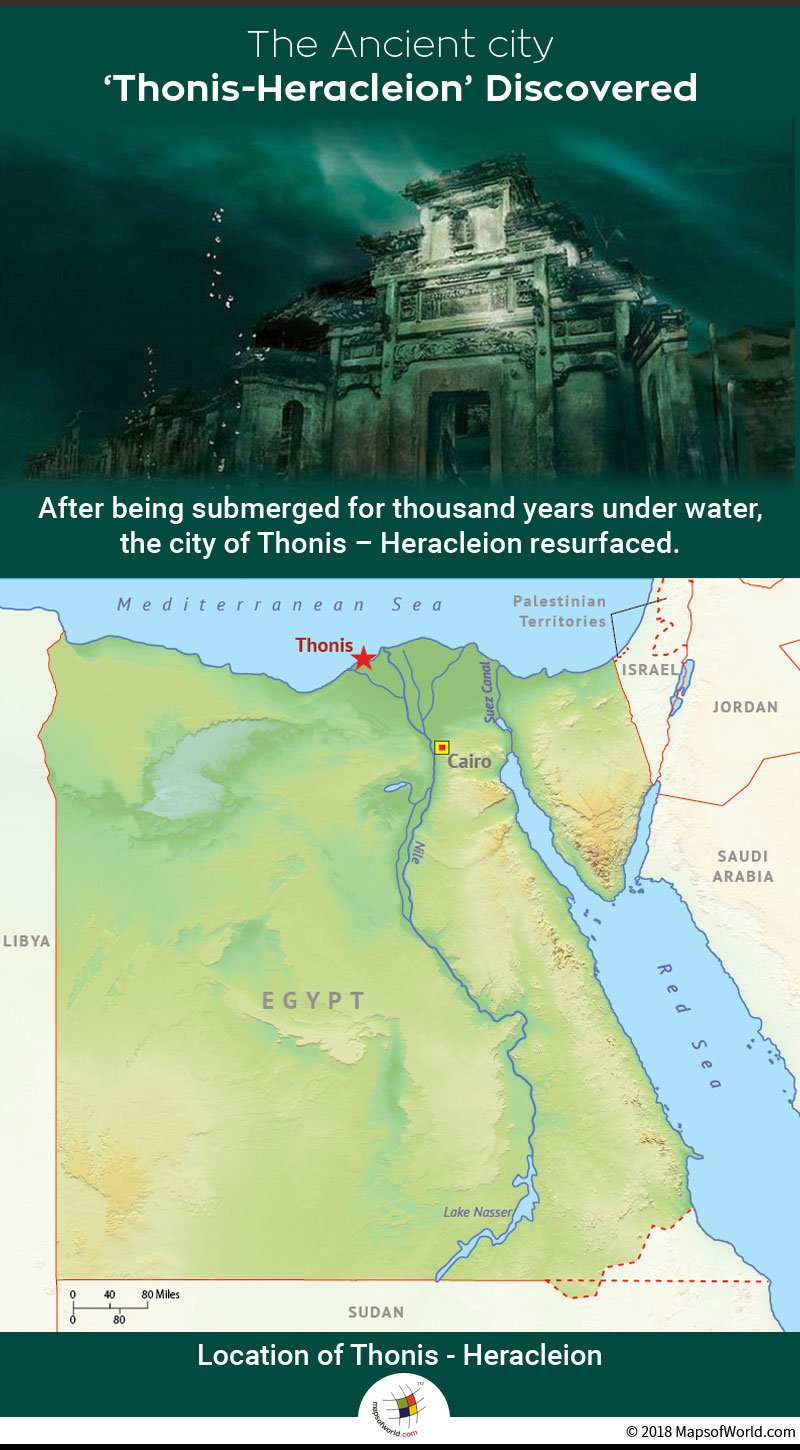

After more than thousand years, the city Thonis resurfaced
Hidden from humans for centuries, it was the sharp sight of an RAF commander that the world came to know about the magneticity of the ancient Egyptian town Thonis-Heracleion. The pilot was flying over Abu Qir, a town on the Mediterranean coast of Egypt, when he caught a glimpse of the ruins in the water. What followed was extensive research by a group of divers in the early 2000s in order to discover what was under the water. Researchers from The European Institute of Maritime Archaeology, led by renowned archaeologist Franck Goddio, eventually discovered the treasures of an ancient city which was forgotten, deep inside the Abu Qir Bay.
It was believed that Thonis and Heracleion were separate conurbations situated on the current Egyptian mainland, near Canopic Mouth of the Nile. However, after the sightings of pilot, the extensive offshore research widened fresh prospects. Around the 8th century CE the Egyptian city of Thonis – Heracleion had sank, and it resurfaced after more than a thousand years, near Alexandria, the major economic center and second-largest city in Egypt.
After the painstaking work of underwater excavation utilizing hi-tech survey techniques and vigorous human effort, archaeologists came across a large piece of rock under the seabed. It was a 17ft red granite statue of Hapy — Egyptian God of the Nile, the river that had swallowed the benighted city. The statue was still intact, even though it was salt-encrusted stone. This had set their momentum and they were motivated to unearth more treasures. Glittering golden plates and coins, shards of pottery, precious jeweler items, oil lamps and more were discovered. Moreover, 6ft statue of the Egyptian bull god Apis, ruins of temples, statues of pharaohs and deities that unearthed, reinforced the idea that the city must have been a prominent religious site. Thonis – Heracleion was Egypt’s bustling city and a cosmopolitan gateway to the Mediterranean. The huge variety of antiquities discovered are now exhibited at The British Museum, located in London.
The findings suggested that the city evidentially indulged in international commerce, as over 64 shipwrecks and more than 700 anchors were also found submerged. It is believed that for several centuries, the city was a major trading port, aka, international harbor for many regions, and formed a nexus to the western world.
The origins of the city trace back to 12th century BC, and the name has been mentioned in the works of great historians like Diodorus of Sicily. Another writings of historian Herodotus mention that Heracles was a Greek god and hero who invaded Egypt when he stepped foot at this port city. Thus, a grand temple was built for him, and the city Thonis was given the name ‘Heracleion.’ He also claimed that Paris and Helen of Troy have embarked this city.
Thonis-Heracleion had become a distant memory, before it resurfaced once again in the 21st century – this itself is an eerie reminder that force of nature is too dominating and can bring an end to this world one day.
Know more:
Related maps and info:
The Republic of Madagascar is an island country located in the Indian Ocean, off the…
The Euro is the official currency of the European Union. It is, however, not incumbent…
There are many countries or regions that are partially recognized by the UN, have disputes…
The Alaska Statehood Act was signed into law by President Dwight D. Eisenhower in 1958,…
The name Persia may, however, only be used to refer to Iran in some contexts.…
Hawaii is an Island State in the US. It is one of the 50 states…